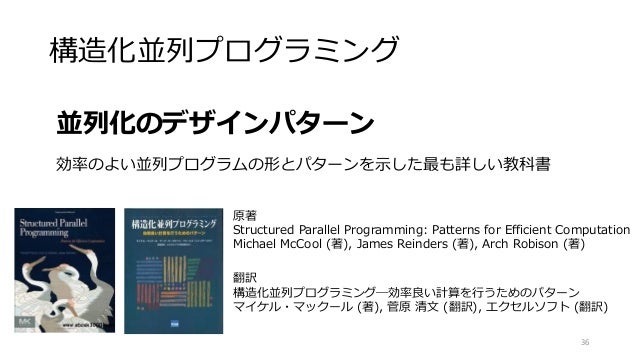Torrent Structured Parallel Programming Patterns For Efficient Computation
Ik Multimedia All Product Keygen more. Structured Parallel Programming offers the simplest way for developers to learn patterns for high-performance parallel programming. Written by parallel computing experts and industry insiders Michael McCool, Arch Robison, and James Reinders, this book explains how to design and implement maintainable and efficient parallel algorithms using a composable, structured, scalable, and machine-independent approach to parallel computing.
It presents both theory and practice, and provides detailed concrete examples using multiple programming models. The examples in this book are presented using two of the most popular and cutting edge programming models for parallel programming: Threading Building Blocks, and Cilk Plus. These architecture-independent models enable easy integration into existing applications, preserve investments in existing code, and speed the development of parallel applications. Examples from realistic contexts illustrate patterns and themes in parallel algorithm design that are widely applicable regardless of implementation technology. Software developers, computer programmers, and software architects will find this book extremely helpful. Key Features. Listings Preface Preliminaries Chapter 1.
Introduction 1.1 Think Parallel 1.2 Performance 1.3 Motivation: Pervasive Parallelism 1.4 Structured Pattern-Based Programming 1.5 Parallel Programming Models 1.6 Organization of this Book 1.7 Summary Chapter 2. Background 2.1 Vocabulary and Notation 2.2 Strategies 2.3 Mechanisms 2.4 Machine Models 2.5 Performance Theory 2.6 Pitfalls 2.7 Summary PART I. Patterns Chapter 3. Patterns 3.1 Nesting Pattern 3.2 Structured Serial Control Flow Patterns 3.3 Parallel Control Patterns 3.4 Serial Data Management Patterns 3.5 Parallel Data Management Patterns 3.6 Other Parallel Patterns 3.7 Non-Deterministic Patterns 3.8 Programming Model Support for Patterns 3.9 Summary Chapter 4. Map 4.1 Map 4.2 Scaled Vector Addition (SAXPY) 4.3 Mandelbrot 4.4 Sequence of Maps versus Map of Sequence 4.5 Comparison of Parallel Models 4.6 Related Patterns 4.7 Summary Chapter 5. Collectives 5.1 Reduce 5.2 Fusing Map and Reduce 5.3 Dot Product 5.4 Scan 5.5 Fusing Map and Scan 5.6 Integration 5.7 Summary Chapter 6. Data Reorganization 6.1 Gather 6.2 Scatter 6.3 Converting Scatter to Gather 6.4 Pack 6.5 Fusing Map and Pack 6.6 Geometric Decomposition and Partition 6.7 Array of Structures vs.


Patterns for Efficient Computation. Structured Parallel Programming offers the simplest way for developers to learn. 3.2 Structured Serial Control Flow Patterns.
Structures of Arrays 6.8 Summary Chapter 7. Stencil and Recurrence 7.1 Stencil 7.2 Implementing Stencil with Shift 7.3 Tiling Stencils for Cache 7.4 Optimizing Stencils for Communication 7.5 Recurrence 7.6 Summary Chapter 8. Fork–Join 8.1 Definition 8.2 Programming Model Support for Fork–Join 8.3 Recursive Implementation of Map 8.4 Choosing Base Cases 8.5 Load Balancing 8.6 Complexity of Parallel Divide-and-Conquer 8.7 Karatsuba Multiplication of Polynomials 8.8 Cache Locality and Cache-Oblivious Algorithms 8.9 Quicksort 8.10 Reductions and Hyperobjects 8.11 Implementing Scan with Fork–Join 8.12 Applying Fork–Join to Recurrences 8.13 Summary Chapter 9. Pipeline 9.1 Basic Pipeline 9.2 Pipeline with Parallel Stages 9.3 Implementation of a Pipeline 9.4 Programming Model Support for Pipelines 9.5 More General Topologies 9.6 Mandatory versus Optional Parallelism 9.7 Summary PART II. Examples Chapter 10. Forward Seismic Simulation 10.1 Background 10.2 Stencil Computation 10.3 Impact of Caches on Arithmetic Intensity 10.4 Raising Arithmetic Intensity with Space–Time Tiling 10.5 Cilk Plus Code 10.6 ArBB Implementation 10.7 Summary Chapter 11. K-Means Clustering 11.1 Algorithm 11.2 K-Means with Cilk Plus 11.3 K-Means with TBB 11.4 Summary Chapter 12.